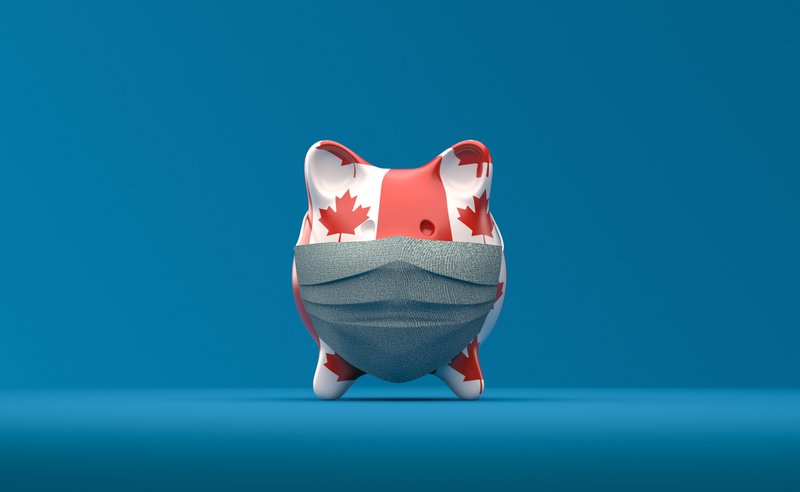
David Olive
July 22, 2020
The Canadian economy is in better shape than it looks.
That’s contrary to the gloomy expectations of many Canadians and expert forecasters. For instance, 62 per cent of respondents to the latest Bloomberg Nanos Canadian Confidence Index said they expect the economy to weaken even further in the next six months.

Actually, Canadian economic conditions are improving, not weakening.
It’s commonly said, and with good reason, that Canada won’t return to pre-pandemic economic normality for at least one and a half years.
But considering the economic double-whammy suffered by Canadians — a COVID-19-triggered economic shutdown and a collapse in global oil demand — Canada is recovering sooner than we had reason to expect.
Here’s where we stand, and where we’re headed:
Employment and household income
Canada created almost a million new jobs in June, one of the strongest one-month job gains on record. And hours worked, which were severely cut as the pandemic got underway, jumped 6.3 per cent, which is a historically large gain in a single month.
And, the number of Canadians receiving the $500 weekly payment from the Canada Emergency Response Benefit (CERB) had already dropped by 1.2 million from a peak of eight million.
The June jobless rate fell to 12.8 per cent from May's 13.2 per cent. But that’s because the workforce expanded with Canadians returning to the job market in search of work — itself a sign of confidence in a strengthening economy.
The upside on job restoration is tremendous, as Canada’s major cities reopen over the next few months. COVID-19 struck hardest in cities, where about 80 per cent of Canadians live. That’s where lockdowns have done their greatest economic damage while saving tens of thousands of lives.
The main reason job creation promises to continue strong is the federal income supports for individuals and businesses that date from the beginning of the pandemic. They have kept workers and employers in sufficiently good shape to get the economy moving again quickly, as soon as it is safe to do so.
That is a crucial point. There is pressure at home and abroad for governments to withdraw the emergency income supports.
But it is wildly premature to do so. That’s why the Trudeau government extended the CERB program. It’s why other major economies, from China to the U.K., are extending income-support programs or rolling out new ones.
And even when the time comes to wind them down, “Fiscal stimulus programs should be on standby, ready to be deployed or increased in order to combat another shutdown” if required by a second wave of the novel coronavirus, Kristina Hooper, global market strategist at Invesco Canada, said last week.
Green shoots
The Bloomberg Nanos confidence index referred to above reported that for the seventh straight week Canadians expressed increased confidence in an economic recovery. While almost two-thirds of those polled still believe the economy will weaken over the next six months, that’s down from 80 per cent who were pessimistic four weeks earlier.
And while Canadians still worry about the big picture, they feel quite confident about their own individual prospects. For instance, 64.2 per cent of survey respondents said they felt secure in their jobs, which is where that number stood just before the pandemic.
Canadian household debt levels were at record highs long before the pandemic struck. But Equifax Canada, the country’s biggest credit reporting firm, said this week that Canadian consumer debt balances, excluding mortgages, fell in the first quarter of 2020, the first drop in more than a decade.
And consumer insolvencies plunged to their lowest level in 13 years.
Traditional Canadian financial prudence has reasserted itself during the pandemic. And bolstering that caution are the above-mentioned federal income supports. They have helped dissuade Canadians from turning to debt to get through the crisis.
The so-called “debt bomb”
Ottawa will post unprecedented deficits this year in fighting COVID-19. By May, the projected 2020 deficit was $250 billion. That is pushing our debt-to-GDP ratio to about 100 per cent.
It has been necessary to spend those funds. But how do we pay off that debt?
Actually, we don’t have to.
Deficit spending during the Second World War pushed the debt-to-GDP ratio well above 100 per cent. And for the next three decades, the feds continued to run annual deficits, all of them added to the national debt.
Yet, by the mid-1970s, the debt-to-GDP ratio was down to about 20 per cent. Decades of postwar economic expansion saw the economy eclipse the size of the debt.
After plunging in 2020, Canadian GDP is expected to soar next year, by about 6 per cent, the Conference Board of Canada’s latest estimate. GDP growth should continue strong thereafter.
In the meantime, Ottawa is financing its debt at rock-bottom rates.
Early in the pandemic, the Bank of Canada (BoC) drastically cut its key lending rate to the current 0.5 per cent.
The BoC also began buying government debt, and is able to buy much more. That practice, called “quantitative easing” (QE), was pioneered in the U.S. during the Great Recession. It helped America recover much faster from the recession than Europe.
Canada, safe harbour for foreign investors
In April, international investors bought $54 billion worth of Canadian federal and corporate debt, Statistics Canada reported this week. That’s a record one-month purchase.
And it’s in addition to $39 billion in Canadian debt bought by non-residents in this year’s first quarter.
“The strong inflows into Canadian debt markets reveal that, even during the height of the crisis in this country, Canada was seen as an attractive place to park funds,” Katherine Judge and Royce Mendes, economists at CIBC Capital Markets, wrote in a client note.
Obviously, we’re not out of the woods. About 6.8 million Canadians continue to rely on CERB payments. Household debt levels have declined, but at 177 per cent of disposable (after tax) income, they remain worrisome.
And we’re in for a “multi-speed” economic recovery. Some sectors will be back to normal relatively soon, including online retailers, tech, manufacturing and construction. Others will struggle longer, including tourism, aviation, oil and gas, and restaurants and hotels.
And we need continued vigilance against the virus. No sooner had New Zealand declared itself COVID-19-free than it had a mini-outbreak this week of three new coronavirus cases.
This is one stubborn virus.
So be well, and keep social distancing.


